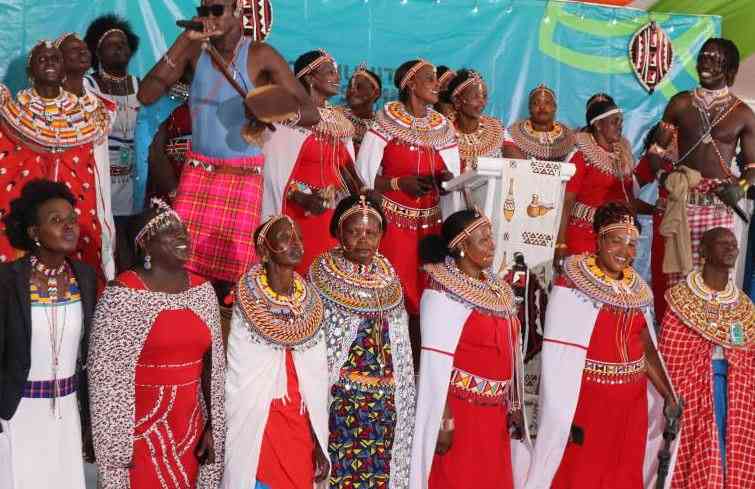
Wellness is so crucial to travellers, that Unesco (the United Nations Educational, Scientific and Cultural Organisation), which acknowledges and protects crucial architecture, nature, and artefacts around the world, also recognises and protects historic health cultural practices, naming them “Intangible Cultural Heritage”.
The latest entry to this group of Intangible Cultural Heritage is Indonesia’s “Jamu”, a medicinal drink, described as a wellness custom, worthy of recognition by the global body. In this special list are five cultural wellness practices.
Though most of them were practised in the Far East, (and Finland), the practices have been localised in many countries, and now travellers can find UNESCO-listed experiences that combine tradition and health in their destination countries.
Some traditional wellness practices you are likely to find at your destination are:
Jamu
The ancient traditional wellness drink is connected to carvings in Indonesia’s biggest temple. The 1,200-year-old stone carvings of an elixir, being offered to a sick man to promote healing. Today thousands of tourists flock to the island of Java to sample Jamu – a blend of ingredients that can include ginger, lime, turmeric, and tamarind (what Kenyans refer to as dawa, a popular drink during the Covid-19 pandemic).
If you do not find Jamu on the menu of your destination, request this special recipe – the executive chef will take up the request as the ingredients for UNESCO-listed wellness traditional drink are available. Better still, you can make the drink yourself as it is an easy recipe.
This ancient traditional drink aims to treat illness by balancing the body’s temperature. When served cold to people with a fever, while heated versions help patients suffering from chills. It is drunk by all ages, and has variations, depending on the creativity. Some variations include adding herbs, spices, or a combination of both.
Yoga
Travellers can find these ancient traditional wellness practices in almost every destination that according to UNESCO’s records was and is practiced across India – whether on the Himalayan Mountains, palm-spiked beaches, or temple floors.
According to Harriet Munji, a wellness therapist, India is known for both conventional and traditional healing practices, which is why thousands troop to seek physical, and spiritual philosophical services.
“The world is a global village, and thanks to the 5,000-year-old promise of enlightenment, physical recovery, emotional repair, or other personal intentions through yoga, now included in many wellness travel packages and are part of the wellness services offered by health,” says the wellness therapist.
Joy Mutiga, who loves yoga, says the ancient Indian therapy of yoga is available in many spheres of wellness businesses including the hospitality industry.
“What I enjoy most about yoga, is the way it engages me in a sequence of bodily poses, which range from simple to challenging, and sometimes I get carried away by the meditating, and chanting, but the one I love most is practising breath control to achieve mental tranquillity,” says Joy.
UNESCO cites yoga as being practised by the young and old without discriminating against gender, class, or religion. In Kenya, says Joy, one can find yoga classes in five-star resorts, and yoga established centres, or one can practice at home after going taking yoga classes.
Sauna
The traditional wellness practice has its roots in Finland where it has been practiced for over 10,000 years. UNESCO records indicate that there are about 3.3 million saunas – steam-filled spaces in the Scandinavian country whose population is only 5.5 million people.
Joy says that Sauna and its benefits are known to many Kenyans and are part of hotels and resorts, some businesses provide sauna services alongside other traditional wellness services.
Massage
Reportedly, Thiland’s tourist district where the practice originates from is so laden with massage parlours that travellers perceive this wellness therapy as a sole money making-making venture. So do travellers to other destinations that also have adopted the practice of this 2,500-year-old culture.
Harriet says she indulges in this health-beneficial practice, through the services of professional masseurs “who use their hands, feet, knees, and elbows to skilfully knead, bend, stretch, and squeeze patients, the aim being to treat health conditions by unlocking the body’s 72,000 energy,” says the therapist who is also a trained masseur.
Acupuncture
This is another UNESCO list of intangible cultural heritage. It is a Chinese practice of deliberately pricking human skin. The Chinese practised it as a method of balancing energies within the human body, specifically the dark force of the dark (yin), and the light (yang).
According to George Mwaura, an ardent flyer, acupuncture therapy seeks to improve mental and physical health by clearing blockages in the life of force, sometimes releasing endorphins – the “feel-good hormones”.
“Acupuncturists typically insert five to 200 small needles into strategic points on a patient’s skin, and in doing so, they treat everything from migraines to nausea, muscle pain, respiratory disorders,” says the 56-year-old who adds that he prefers these proven and tested ancient traditional ways of wellness and treatment.
Twenty years ago, he says acupuncture was little known in the country, but now its practice is widespread.
Next time you are taking a vacation or a business trip, remember to include these UNESCO recognised and protected historic health cultural practices, labelled Intangible Cultural Heritage.